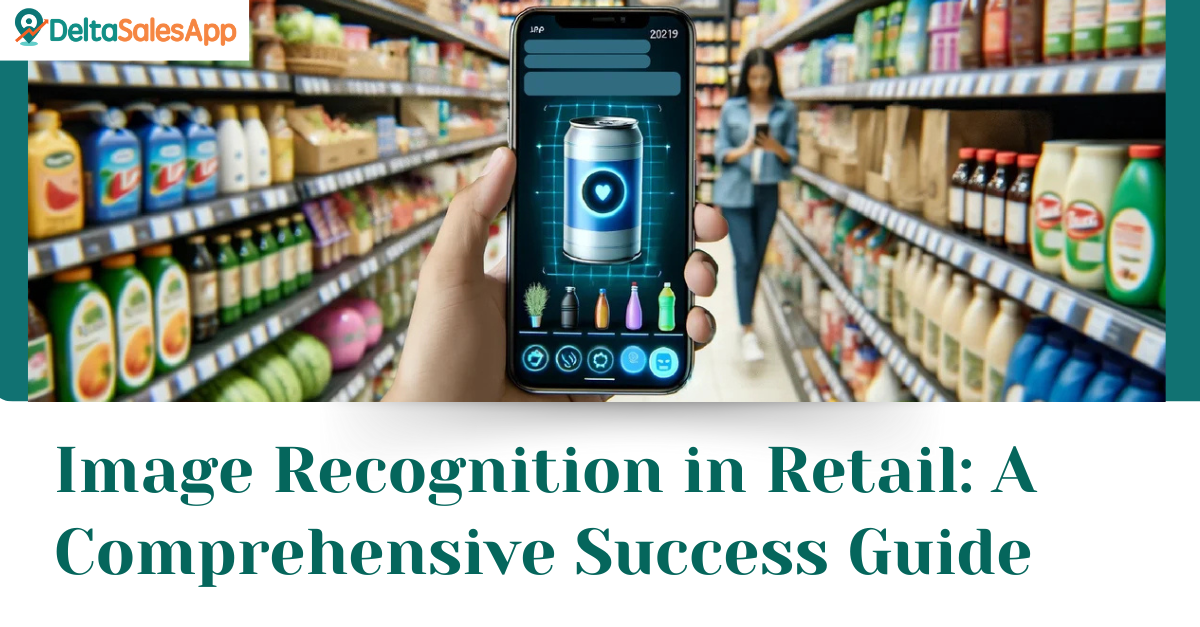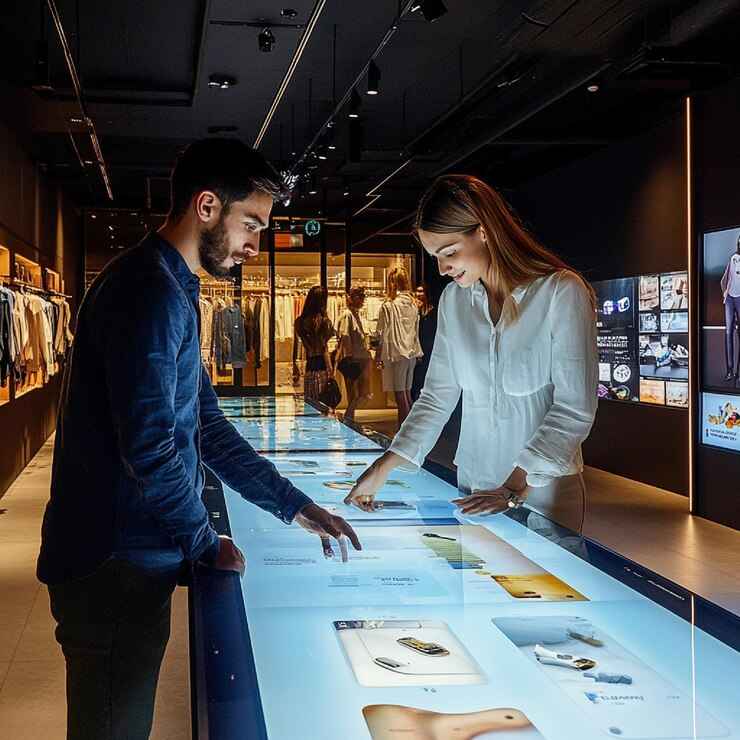Image Recognition In Retail: A Comprehensive Success Guide

In the ever-evolving landscape of retail, technological advancements are reshaping how businesses operate, especially in the area of customer experience and operational efficiency. One of the most promising innovations in this sector is image recognition technology, which is revolutionizing the way retailers interact with customers, manage inventory, and streamline operations.
This blog explores how image recognition can transform the retail industry, providing a comprehensive guide to its success.
What is image recognition?
Image recognition is a subset of computer vision technology that uses algorithms and machine learning to analyze and interpret visual data, such as images or video streams. In retail, this technology can identify products, detect patterns, and even track customer behavior, providing valuable insights for businesses.
Applications of Image Recognition in Retail
Enhancing the Customer Experience Image recognition can be integrated into various touchpoints to enhance the overall customer journey. For instance, in physical stores, cameras equipped with image recognition can analyze shopper behavior in real time. By understanding the flow of traffic and how customers engage with products, retailers can optimize store layouts and product placement.
Additionally, image recognition can power smart mirrors or kiosks, allowing customers to try on virtual clothing or accessories, reducing the need for physical fitting rooms.
Automated Inventory Management Retailers can use image recognition to automate the inventory management process. Cameras or drones can monitor store shelves in real time, detecting low stock levels, misplaced items, or out-of-stock products. This helps maintain optimal inventory levels, reduce stockouts, and minimize human errors, ensuring that customers find what they are looking for.
Checkout-Free Shopping Retail giants like Amazon Go have pioneered checkout-free shopping, where customers simply pick up items and walk out without needing to go through a cashier. Image recognition, combined with other technologies like RFID and sensors, tracks the items that customers take and automatically charges them when they exit the store. This seamless shopping experience is gaining traction in both large and small retail establishments.
Personalized Marketing Retailers can use image recognition to identify products that customers have shown interest in, whether through online browsing or physical interactions in stores. This data can be used to deliver personalized recommendations or targeted promotions. For instance, if a customer picks up a certain product, image recognition can trigger an alert to offer discounts or inform the shopper about similar items, increasing the chances of a sale.
Security and Loss Prevention Image recognition technology is also valuable in improving security and reducing shrinkage (loss of inventory). By monitoring video feeds in real-time, retailers can detect suspicious activities such as shoplifting or the movement of unauthorized goods. AI-powered cameras can instantly alert security teams if any unusual patterns are detected, helping prevent losses and ensuring a safe shopping environment.
How to Implement Image Recognition in Retail: Key Steps
Identify the Use Case Before implementing image recognition technology, retailers must define clear objectives. Whether the goal is to improve customer engagement, optimize inventory, or reduce fraud, identifying the right use case will help in selecting the appropriate tools and technologies.
Choose the Right Technology Stack Image recognition in retail requires robust hardware (cameras, sensors) and powerful software (machine learning models, analytics platforms). Retailers should choose solutions that align with their needs, scalability, and budget. Leading platforms like Google Cloud Vision, Amazon Rekognition, and Microsoft Azure offer cloud-based services with pre-trained models for image analysis.
Integrate with Existing Systems Successful implementation requires seamless integration with existing retail systems, such as point-of-sale (POS), customer relationship management (CRM), and inventory management systems. A unified data ecosystem enables retailers to gain actionable insights from image recognition and improve decision-making.
Test and Optimize Like any new technology, image recognition solutions should undergo thorough testing before full-scale deployment. Retailers should run pilot programs, gather feedback, and refine their image recognition systems based on real-world data and user feedback. Continuous optimization ensures maximum accuracy and efficiency.
Train staff and educate customers. Employees should be trained on how to use the new technology, ensuring that they understand its capabilities and limitations. Additionally, customers may need education on how image recognition improves their shopping experience, from faster checkouts to personalized offers.
Benefits of Image Recognition in Retail
Improved Efficiency: Automates various retail tasks such as inventory management, stock monitoring, and checkout processes, reducing the need for manual labor.
Enhanced Customer Experience: Provides a more personalized and seamless shopping experience, driving customer loyalty and satisfaction.
Better Data Insights: Helps retailers gather valuable data on customer behavior, product preferences, and trends, enabling better decision-making.
Cost Reduction: By reducing the need for manual checks and optimizing inventory, image recognition helps lower operational costs.
Competitive Edge: Adopting innovative technologies like image recognition can differentiate a retailer from competitors, appealing to tech-savvy customers.

Challenges to Overcome
Privacy Concerns: The use of image recognition raises privacy issues, as customer data is collected through cameras and sensors. Retailers must ensure compliance with privacy regulations such as GDPR and obtain necessary consent from customers.
High Implementation Costs: The initial investment in image recognition technology, including hardware, software, and training, can be significant, especially for smaller retailers.
Accuracy Issues: Image recognition is not infallible. Errors in object detection or facial recognition can lead to inaccurate data, affecting decision-making and customer experience.
Technological Integration: Integrating new technology into existing retail systems can be complex, requiring significant technical expertise and resources.
Conclusion
Image recognition technology holds immense potential to revolutionize the retail industry, offering benefits ranging from improved customer experiences to enhanced operational efficiency. By embracing this technology, retailers can gain a competitive advantage, streamline their operations, and deliver personalized experiences that drive customer loyalty. However, careful planning, testing, and integration are key to ensuring successful adoption and realizing the full potential of image recognition in retail.
FAQ
Q1: Is image recognition only useful for large retailers? A1: No, even small and medium-sized retailers can benefit from image recognition. Solutions can be tailored to fit different business sizes and budgets, allowing small businesses to leverage the technology for inventory management, customer insights, and security.
Q2: How does image recognition improve inventory management? A2: Image recognition helps retailers track stock levels, identify misplaced products, and automatically update inventory systems in real-time, ensuring that shelves are always stocked and organized.
Q3: Is image recognition accurate for all types of products? A3: Image recognition technology has come a long way, but its accuracy can vary depending on the complexity of the product and the quality of the cameras or sensors used. Continuous training and optimization are necessary to improve accuracy.
Q4: Can image recognition replace human employees in retail? A4: While image recognition can automate many tasks, such as inventory tracking and customer behavior analysis, human employees are still essential for tasks requiring empathy, customer service, and decision-making.
Q5: Are there privacy concerns with using image recognition in retail? A5: Yes, privacy concerns are a significant issue. Retailers must adhere to privacy regulations like GDPR and ensure that they collect and use customer data responsibly. Providing transparency about data collection and usage is essential.









